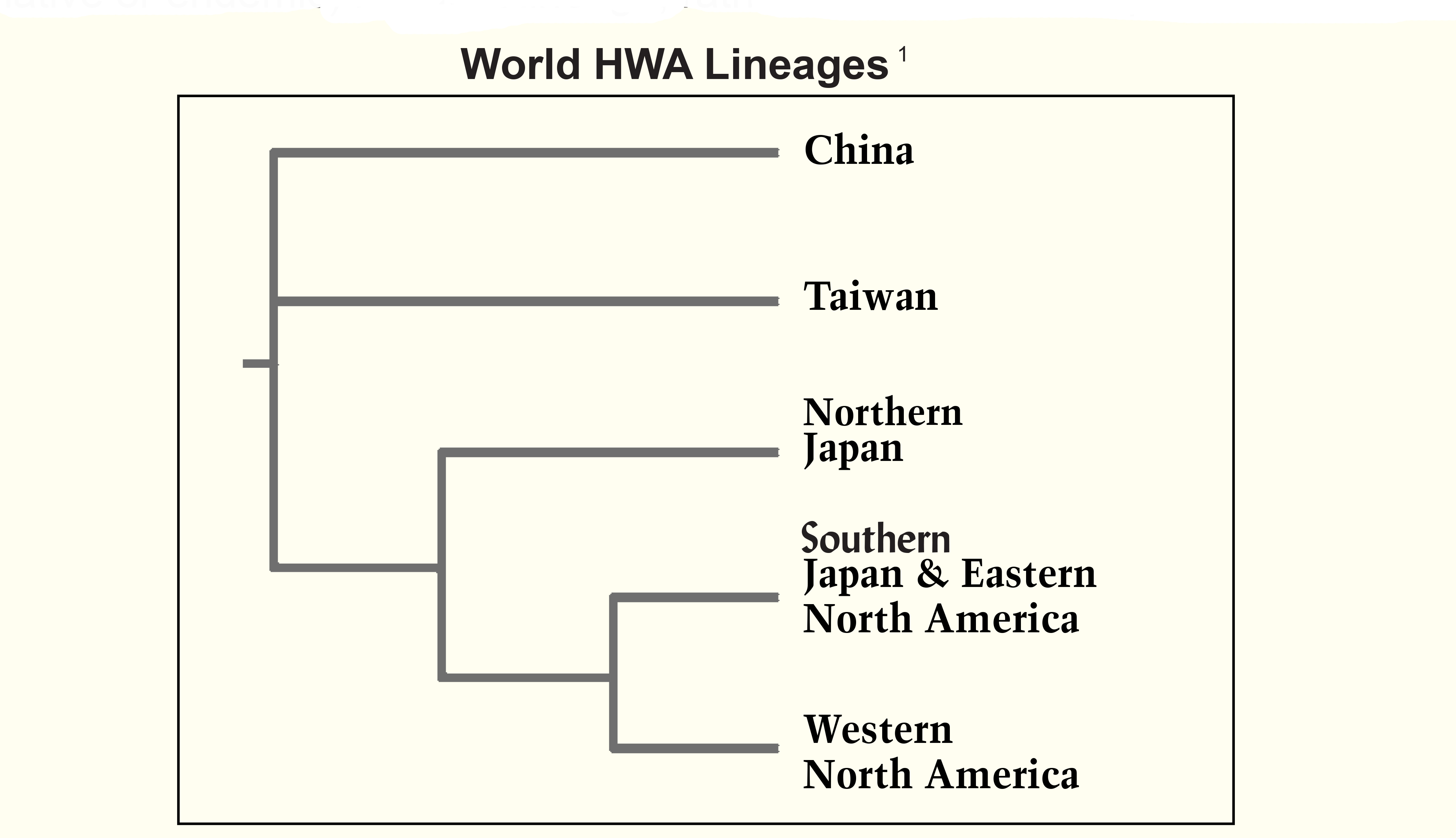FAQ about Hemlocks and Hemlock Woolly Adelgids
Where Did Hemlock Woolly Adelgid Come From?
DNA analysis has shown that Hemlock Woolly Adelgid (HWA) introduced to Eastern North America is identical to that found in Southern Japan – and different from the HWA strains found in all other parts of the world, including Western North America. This research (2006, 2016) by Nathan Havill, USFS and associates, confirms that Southern Japan was the origin for our HWA “import” to Eastern North America.
How, When & Where was Hemlock Woolly Adelgid Introduced to the Eastern US?
Scientific research on the origins of HWA has identified Japanese gardens at US Gilded Age Estates in the early 20th century as the likely points of introduction for the hemlock woolly adelgid from Southern Japan. Several Gilded Age Japanese garden sites, constructed in the early 20th century (between 1910 & 1915), introduced Japan-origin ornamental conifers that could transport HWA from Japan to the eastern US. And these sites, ranging from Virginia to Long Island, are consistent with USDA historical data on early HWA discovery sites.
Gilded Garden Introduction Sites (1910-1915) for HWA
How important is “biological resistance” of Hemlocks
to Hemlock Woolly Adelgids?
Every hemlock species has a different level of susceptibility or resistance to each strain of hemlock woolly adelgid. Total biological resistance, in which a hemlock is impervious to native HWA, is not a property found in natural hemlock ecosystems, as HWA could not survive without a food source.
In southern Japan, our HWA “import” feeds on a native hemlock (Tsuga seiboldii) that does not have a high level of resistance to this HWA. So this hemlock depends on the native HWA predator Sasajiscymnus tsugae to control HWA numbers. And this biological control allows hemlocks (including T canadensis imports from the US) to grow and prosper in the presence of the HWA from Southern Japan.
But resistance levels to particular Hemlock Woolly Adelgid strains differ across hemlock species. For example, the hemlock species from China (Tsuga chinensis) shows high levels of resistance to the HWA strain from Southern Japan. In China, however, T chinensis supports feeding and reproduction by their native HWA strains.
The best documented case of biological resistance to a native Hemlock Woolly Adelgid occurs in North America’s Pacific Northwest. There, the Western hemlock (Tsuga heterophylla) is so resistant to its native HWA strain, that the only hemlocks susceptible to HWA attack are those that have been stressed or damaged by other factors (often human).
At this level of biological resistance, HWA predators play no role in the successful existence of wild hemlocks in the Pacific NW. So this makes the PNW an unlikely place to search for HWA predators for use in the eastern US! Learn more about choosing an HWA predator for the eastern US.
